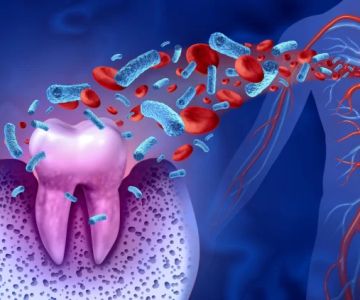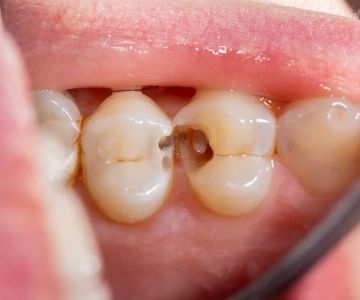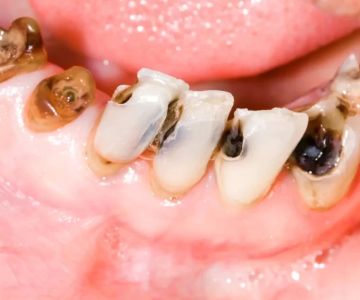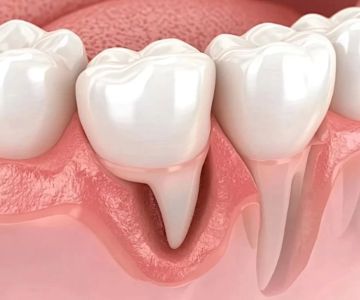Understanding Gum Disease
Gum disease, also known as periodontal disease, is an inflammation and infection of the gums and the bone that supports your teeth. It can progress from mild to severe stages, causing various problems and potentially leading to tooth loss.
Causes of Gum Disease
The primary cause of gum disease is the buildup of dental plaque, which contains harmful bacteria. Poor oral hygiene is a major contributor, but genetics can also play a role. Other factors such as smoking, diabetes, autoimmune diseases, hormonal changes, stress, and heart disease can increase the risk. Additionally, the bacteria that cause gum disease can be passed from person to person through prolonged contact with saliva.
Stages of Gum Disease
There are four main stages of gum disease. Gingivitis is the earliest stage, characterized by red, puffy, and bleeding gums. If left untreated, it can progress to mild periodontitis, where the bacteria affect the supporting bone and create pockets around the teeth. Moderate periodontitis leads to more severe damage to the ligaments and soft tissues, and advanced periodontitis can result in loose teeth and tooth loss.
Diagnosis of Gum Disease
Dentists diagnose gum disease during routine examinations by looking for plaque buildup and asking about symptoms. They may use a periodontal probe to measure the pockets around the teeth and take dental X-rays to assess bone loss. Referral to a periodontist for further evaluation and treatment might be necessary.
Treatment Options for Gum Disease
Gum disease is manageable but not curable. Early-stage gingivitis can often be reversed with proper oral hygiene and regular dental cleanings. For more advanced cases, treatments like scaling and root planing, pocket reduction surgery, bone grafting, gum grafting, guided tissue regeneration, LANAP, and the use of platelet-rich fibrin or plasma may be recommended. The choice of treatment depends on factors such as the severity of the disease, overall health, smoking status, and previous treatments.
Prevention of Gum Disease
Most cases of gum disease can be prevented with consistent and proper oral hygiene. This includes brushing teeth two to three times a day, flossing daily, using an antibacterial mouthwash, avoiding smoking and tobacco use, and visiting the dentist for regular cleanings and exams. People with a genetic predisposition or other health conditions may need more frequent cleanings.
Outlook and Prognosis
While gum disease is not life-threatening, it can lead to other health problems if the infection spreads. Early detection and treatment are crucial for managing oral health. With proper care, the progression of the disease can be controlled and the risk of tooth loss reduced.
Living with Gum Disease
If you notice bleeding, tender, or swollen gums, it's essential to see a dentist promptly. Early intervention is key. If you're referred to a periodontist for treatment, it's helpful to have questions prepared, such as the stage of your gum disease, the type of treatment needed, recovery time, and follow-up care.
In conclusion, gum disease is a serious condition that requires attention and proper care. By understanding its causes, stages, diagnosis, treatment options, and prevention methods, you can take proactive steps to maintain good oral health and avoid the complications associated with gum disease. Regular dental visits and a commitment to good oral hygiene practices are essential for keeping your gums and teeth healthy.






 Sung Lee Orthodontics5.0 (108 review)
Sung Lee Orthodontics5.0 (108 review) Almost Heaven Dentistry St. Albans Office4.0 (167 review)
Almost Heaven Dentistry St. Albans Office4.0 (167 review) Valleywise Community Health Center - Mesa3.0 (252 review)
Valleywise Community Health Center - Mesa3.0 (252 review) Lakes Orthodontics4.0 (250 review)
Lakes Orthodontics4.0 (250 review) James B Ford DDS4.0 (87 review)
James B Ford DDS4.0 (87 review) Main Street Pediatric Dentistry: Penny Resnick-Graulich DMD4.0 (785 review)
Main Street Pediatric Dentistry: Penny Resnick-Graulich DMD4.0 (785 review) The Importance of Oral Health Education During Pregnancy for a Healthy Pregnancy
The Importance of Oral Health Education During Pregnancy for a Healthy Pregnancy Best Tips for Brushing Your Teeth Properly for Healthy Gums: Essential Techniques for Oral Health
Best Tips for Brushing Your Teeth Properly for Healthy Gums: Essential Techniques for Oral Health Why Skipping Dental Checkups Can Lead to Bigger Oral Health Problems
Why Skipping Dental Checkups Can Lead to Bigger Oral Health Problems Advantages of Porcelain Dental Restorations
Advantages of Porcelain Dental Restorations How Can Diabetes Cause Tooth and Gum Problems? Preventing and Managing Oral Health Issues
How Can Diabetes Cause Tooth and Gum Problems? Preventing and Managing Oral Health Issues Healthy Habits for Promoting Good Oral Health and Hygiene: Tips for a Healthy Smile
Healthy Habits for Promoting Good Oral Health and Hygiene: Tips for a Healthy Smile